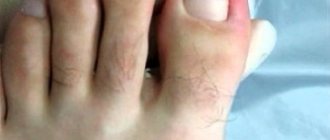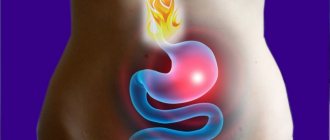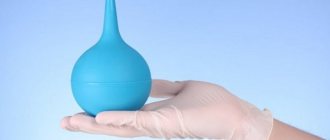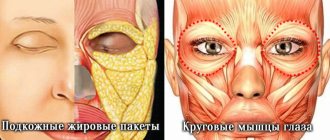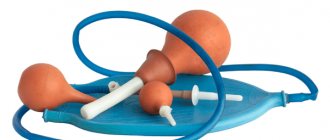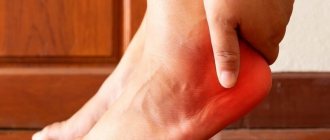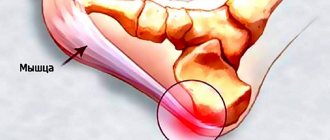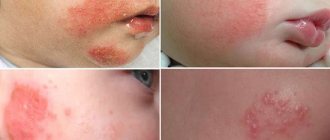Dry callus on the foot is a local thickening of the skin. It usually occurs due to mechanical irritation (friction, pressure). Provoking factors can be not only uncomfortable shoes, but also diabetes, vitamin deficiency, flat feet, and fungus.
Such corns appear on the feet (especially near the heels and toes), and on the fingers themselves. On the outside, the seal has a crust of keratinized particles. If the inner core grows strongly, then it is a callus with a core. When the growth reaches the nerve endings, discomfort is constantly felt, and the skin around it hurts.
- Internal calluses
Types of dry callus
A callus on the foot can be: soft, hard or core.
Hard is a dense, closed growth that does not cause discomfort when walking. Mild pain can only be felt when pressing on the callus. Most often localized on the plantar and lateral surfaces of the feet, heels.
Soft is a seal on the skin with an open surface (similar to a wound) or in the form of a bubble with liquid inside. There is pain when you press it. Characteristic of interdigital spaces.
A callus with a core has a root that goes deep into the skin in the form of a cone. In its center there is a central translucent zone of increased density or a core of dry callus. Causes discomfort and pain when walking. Most often it forms on the toe: the lateral surface of 2–5 toes and the dorsal surface of the interphalangeal joints.
Vascular and fibrous are rarer types. With a vascular callus, there are blood vessels in the core part, while a fibrous callus is a very dense hyperkeratosis that looks like a honeycomb.
Aloe juice and fish oil ointment
If dry calluses bother you often, for example after wearing shoes, it is recommended to prepare an ointment and store it in the refrigerator. The product copes well with dry formations; the mixture can be used for preventive purposes.
Preparation:
- Pick 5-8 aloe leaves, wrap in cling film, and place in the refrigerator for a week.
- Grind the plant material, squeeze out the juice using a gauze cloth.
- Add fish oil to the juice, proportions - in equal parts.
- Place the mixture in a water bath, stirring, and cook until thickened.
- Transfer to a dark glass container and close tightly.
- Once completely cooled, place in the refrigerator.
Treatment
There is an opinion that if a callus does not cause pain, it does not need to be treated. However, this is not true: the aesthetic appearance of such feet is far from perfect, and the absence of pain and discomfort is not a guarantee that these symptoms will not appear in a month or two. All therapeutic methods are aimed at removing the dead layer of cells.
Drug treatment
Creams and ointments based on salicylic acid
Action: Regular use of such products leads to gradual burning of the growth from its bed. Salicylic ointment is applied to the callus after the bath, on dry skin, and a protective patch is glued on top. To prevent the drug from affecting surrounding tissues, a patch with a hole cut in it according to the size of the callus is glued to the skin. The procedure is repeated once or twice a day, the maximum duration of treatment is 28 days. You can use salicylic acid in a solution by moistening a piece of cotton wool with it and applying it to the site of the growth. The callus patch is applied and removed along with the keratinized dead tissue after some time.
| Salicylic ointment 3%, 5% or salicylic acid (solution) 20-30 rub. | Bottega Verde cream, 350 -450 rub. | “Stoletnik” heel cream for calluses and corns, price 80 rub. | Non-callus 70 rub. |
| Cream Namozol 911, price 110 rub. | Collomak, 300-370 rubles (pharmacy) | Pasta “5 days”, price 60 rub. (pharmacy) | Salipod patch 50-100 rubles (pharmacy) |
Creams and ointments based on lactic acid
Action: They soften the horny tissue, less aggressive in action than salicylic acids. Apply a thick layer to the callus (after a bath, on dry feet), cover the top with wax paper and put on woolen socks. After 2 hours, the softened skin is carefully scraped off with a special nail file, and the remaining cream is washed off with warm water. The procedure is repeated after 1-2 days.
| Super Anticorn, price 100 rub. | The effect of OJSC "Svoboda" (in Auchan) is effective against corns, 50 rubles. | Lactic acid solution | Green pharmacy (lactic and salicylic acid, plantain extract, etc.) 170 rub. |
Preparations based on celandine
Action: Celandine cleanses the skin of formations, decomposing horn cells. Use: The drug is applied after a steam bath with a plastic stick strictly to the callus area twice a day for 2–10 days in a row. The duration of cauterization is 10–12 minutes. Read more about the benefits and contraindications of celandine.
| Balm “Mountain Celandine”, 50-100 rubles. | Callus Ka, 70 rub. | Celandine juice | Stop callus with celandine, 80 rub. | |
Products based on sodium hydroxide
Action: This is an aggressive alkali that corrodes horn cells. The product is applied to the previously cleaned and steamed callus very carefully so as not to touch healthy skin. There is a special applicator for this. When applied correctly, the growth darkens, but there is no pain or burning. Over the course of 1-2 days, dead tissue gradually falls off. If necessary, repeat application of the product.
| Super Chistotolo, 30 rub. | Super Celandine 20-30 rub. | Super Celandine 20-30 rub. | Antipapillom gel, 130 rubles (pharmacy) |
Propellen-based products (refrigerants)
Action: This new word in pharmacology, otherwise called home cryotherapy, is more used for the treatment of warts, but is also used for dry growths - Wartner callus removal pen (500 rubles), CryoPharma (700 rubles). Use: A special applicator is applied to the area, the skin turns pale and a water bubble is formed, under which there is healthy tissue. The bubble dries up and gradually disappears.
Phenol-based products
Action: Cauterize and mummify the tissue - Kondilin (700 rubles), Vartek, Verrukatsid (220 rubles). Application: The corn is very carefully treated with a solution and dried in air. Gradually it dries out and disappears. If necessary, repeat the treatment.
Surgery
Removal of old dry callus, when other independent measures do not lead to an effect, is carried out in a cosmetology or surgical office:
- Liquid nitrogen or cryodestruction - A skin area treated with an applicator or a special device with liquid nitrogen, i.e. the callus itself is frozen for 20-30 seconds; if necessary, the procedure is repeated several times. After the procedure, the growth turns white and disappears after a few days. During the recovery period, it is very important to treat the skin with an antiseptic and protect the delicate skin under the former callus from friction with a bandage so that a new skin defect does not form.
- Laser - Exposure to a laser beam leads to heating and layer-by-layer evaporation of keratinized cells from the lesion. The recovery period for laser callus removal is shorter than after cryodexturction, however, after the procedure the same restrictive measures are required as described above.
Under no circumstances should you cut, excise, or peel the callus yourself. This is a direct path to infection of the soft tissues of the foot and ending up in the surgical department.
Surgical methods
Surgical intervention is required if no means have yielded results. Most often, such techniques are used when the callus has a core.
These methods allow you to quickly and effectively remove corns. But after such procedures, primary wound treatment is required. Antiseptics are used for this.
For example, hydrogen peroxide, salicylic alcohol, or alcohol iodine solution are suitable. If blood or other fluid leaks from the wound after surgery, a bandage should be applied. If the phenomenon does not go away, you should immediately consult a doctor.
At home, additional care for the damaged area of the foot is required. For this, various means are used: Lekkos, Ambulance, Dermafit, Radevit. They accelerate healing, prevent the formation of new growths, prevent infection, and soften tissue.
Laser therapy
The beam folds the proteins of the affected tissue. One of the most popular methods. It is characterized by low trauma and there is no bleeding. The beam is very thin, so it does not affect healthy tissue.
The procedure is painless. 1-2 sessions are enough to remove dry callus. The rehabilitation period is short. Contraindications include diabetes, cancer, ulcers and wounds.
Cryotherapy
Liquid nitrogen is used to remove calluses. The vessels narrow sharply, blood flow is disrupted, which is why the rod crystallizes and the tissue gradually dies. The callus usually disappears after 1.5-2 weeks. All this time, careful care is required.
This method is more traumatic and painful than the previous one. Contraindications include multiple lesions.
Electrocoagulation
The keratinized tissue is destroyed under the influence of current. As a result, a crust forms, which disappears after about a week.
The procedure is inexpensive and fast. Reduced likelihood of infection. There are no contraindications. Even with cancer, the penetration of atypical cells into the bloodstream is excluded. But the procedure is painful.
Radio wave surgery
The Surgitron device is used. Moisture evaporates from atypical cells, causing them to be destroyed.
There is no pain, but contraindications must be taken into account: heart disease, epilepsy, hypertension, diabetes.
Drilling with a drill
This method involves mechanical action on the growth. The doctor selects the appropriate cutter depending on the size of the callus and gradually drills out the keratinized layers. The cavity is then treated with an antiseptic.
The procedure is performed without anesthesia, so the patient will feel pain. There are no contraindications (except for diabetes).
Foot baths
They can act as both the main treatment and preparation before applying a medicinal drug. General principle of using baths:
- the water should be hot, but not scalding
- acceptance time – 15 minutes
- After the bath, the callus is carefully treated with a special nail file or pumice stone.
The following compositions can be used:
- A decoction of pine and spruce buds perfectly softens and disinfects the skin. Boil 1 tsp in 1 liter of water. kidneys for 2-3 minutes.
- Soap and soda solution - disinfects and softens horny seals. For 1 liter of water take 1 tbsp. spoon of soda and liquid soap.
- Potassium permanganate solution - prepare a saturated pink solution.
- Saline solution - add 1 tbsp to 1 liter of water. sea salt.
Internal reasons
How to remove dry calluses? To begin with, it is worth determining the main cause of callus. Internal factors include:
- changes that occur in the body upon reaching a certain age: a tendency to damage the skin and loss of elasticity, excessive loss of moisture, etc.;
- diabetes;
- gastrointestinal dysfunction;
- flat feet or poor posture;
- rheumatoid arthritis;
- increased sweating of the feet;
- hypovitaminosis and vitamin deficiency;
- neurological pathologies;
- bone spur;
- obesity.
To remove a dry callus on a finger or foot, it is necessary to eliminate the underlying cause. Only after this can you begin to carry out cosmetic procedures and remove callus. The risk group also includes those who have impaired blood circulation in the lower extremities and a weakened immune system.
Folk remedies
How to get rid of dry calluses without surgery and pharmaceutical drugs? There are methods that have been proven over the years and are very effective when used correctly.
Onion peelThe husk is poured with 9% vinegar and placed in a jar with a lid for 2 weeks. Lubricate the area with Vaseline and place onion peels on it, apply a bandage on top and leave overnight. In the morning, the foot is steamed in water and part of the callus should already fall off. Repeat the procedure after 2 days until the growth is completely removed. | |
Garlic ointmentGarlic is baked in the oven, mixed half and half with butter and applied to the callus, covering the top with a bandage. After 2 hours, the ointment is removed with part of the growth. Repeat after 1-2 days. | |
Calendula flower compressHelps only with fresh calluses. Fresh flowers are crushed and hot water is added to them until a paste is formed, from which a compress is made. Repeat 10 days in a row. | |
Lemon peelFresh lemon peel is glued with the yellow side to the growth, after steaming the leg. Leave the bandage on for 1-2 days. Repeat after 2 days. | |
Propolis alcohol solutionHelps well with calluses on the little finger. A piece of propolis is dissolved in a small volume of alcohol and a third of the volume of salicylic acid is added and stirred until smooth. Apply daily and cover with a bandage. In 5-7 procedures, the growth will completely soften and disappear. | |
Pulp of fresh tomato of sour varietiesThe tomato is mashed into a pulp and applied as an ointment to the callus, with a bandage applied on top. This natural ointment can be used daily at night. | |
Egg1 egg is poured with vinegar and left for 8 days until completely dissolved. The resulting composition is treated as follows: soak a cloth napkin in liquid and apply it to the callus, cover it with cellophane and wrap it. Apply as parts of the growth fall off. | |
Aloe juiceAloe juice is applied every day at night until the horny formation is completely removed. | |
PrunesDried prunes are boiled in milk and applied hot to the area, kept until cool, removed and the next hot prune is applied. The procedure lasts 30 minutes and is repeated daily. | |
Celandine juiceThis is a classic method of treatment - every day the callus is cauterized with a freshly cut cutting of celandine. This method will clear your feet in a few weeks. | |
Garlic flatbreadGrind a clove of garlic into a pulp, add 1 tsp. vinegar essence and flour to obtain a flat cake. A hole is cut out in a piece of plaster according to the size of the callus, glued to the foot and a cake is placed in the hole. Cover the top with a bandage and seal it with a plaster. Remove after 2-3 days, the growth will be removed along with the bandage. If necessary, repeat after a few days, but 1 procedure is usually sufficient. |
Preparation for procedures
Regardless of how dry calluses are treated, we recommend being prepared. Since they are steamed, they are reduced more efficiently.
There will be no particular difficulties in preparation:
- Pour hot water into a small basin, add soda (40 grams of product per 3 liters of water).
- Dip your hands or feet into the hot liquid and steam for a quarter of an hour.
- Gently blot away moisture using a soft cloth or towel.
- Using a pumice stone, slowly remove dry skin particles from the formation.
Repeat the manipulations before each application of folk remedies.
Application of garlic
Not everyone knows how to remove dry calluses using folk remedies. At the same time, there are plenty of recipes for alternative medicine. You can get rid of dry calluses on your feet using garlic. To do this, the vegetable must be peeled. It is recommended to grind a clove of garlic and mix it with a teaspoon of vinegar essence. Flour must be added to the resulting mass. A teaspoon will be enough.
The ingredients need to be mixed well to form something like a dough. From the resulting mass it is necessary to form a cake. It should be applied to the problem area and securely fixed with a band-aid. The compress can be removed only after two days. After this, you should carefully remove the softened callus.
External factors
Dry calluses often occur due to external factors. These include:
- walking on pebbles and gravel without shoes;
- practicing certain sports, such as ballet, gymnastics, running, and so on;
- wearing synthetic socks and stockings;
- uncomfortable and tight shoes that rub your feet and toes;
- wearing high-heeled shoes;
- wearing shoes on bare feet.
If you do not follow the rules of personal hygiene and safety, the chances of developing dry calluses increase. It is unacceptable to wear loose insoles and wide socks in a work environment. Initially, a wet callus appears on the feet - dropsy. Later it turns into dry. If treatment is not started promptly, complications may arise.
Regular tomatoes
You can make a compress from tomatoes. To do this, it is recommended to use grated vegetables. The resulting mass should be applied to the problem area, wrapped in plastic wrap, and secured with a bandage. Finally, you should put a warm sock on your foot. The compress should remain overnight. In the morning you can remove it and remove dry skin.
It is recommended to apply lotions daily for 7 days. The course of therapy can be increased if necessary. Only this treatment regimen will remove the callus core. As a result of therapy, the skin of the feet should become healthier, cleaner and softer.
